Beryl E. Escott is a Canadian-born writer specializing in the history of the Women's Auxiliary Air Force. A native of Newfoundland, Escott was educated in Wales and England. She served in the Royal Air Force from 1961 to 1986. [1]
Beryl E. Escott is a Canadian-born writer specializing in the history of the Women's Auxiliary Air Force. A native of Newfoundland, Escott was educated in Wales and England. She served in the Royal Air Force from 1961 to 1986. [1]

Royal Air Force Halton, or more simply RAF Halton, is one of the largest Royal Air Force stations in the United Kingdom. It is located near the village of Halton near Wendover, Buckinghamshire. The site has been in use since the First World War but is due to close by December 2027.
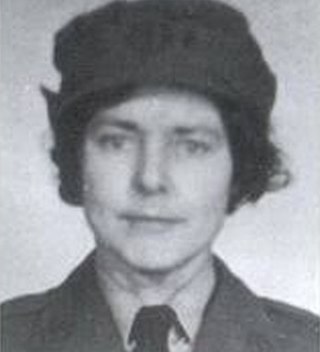
Cecily Margot Gordon Lefort served in the Women's Auxiliary Air Force (WAAF) and in France for the United Kingdom's clandestine Special Operations Executive (SOE) during the Second World War. The purpose of SOE was to conduct espionage, sabotage and reconnaissance in occupied Europe against the Axis powers, especially Nazi Germany. SOE agents allied themselves with French Resistance groups and supplied them with weapons and equipment parachuted in from England.
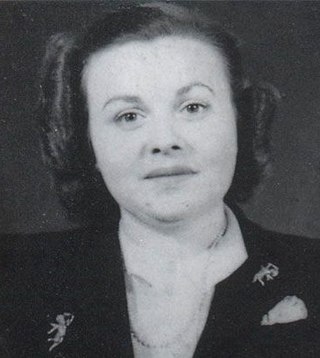
Madeleine Zoe Damerment was a French agent of the United Kingdom's clandestine Special Operations Executive (SOE) organization during World War II. The purpose of SOE was to conduct espionage, sabotage, and reconnaissance in countries occupied by the Axis powers, especially Nazi Germany. SOE agents allied themselves with resistance groups and supplied them with weapons and equipment parachuted in from England. Damerment was first involved in escape lines helping downed allied airmen escape occupied France. She fled France in March 1942 to avoid arrest. After arriving in Britain, she was recruited by the SOE. Damerment was to be a courier for SOE's Bricklayer circuit but was captured by the Gestapo on 29 February 1944 upon arrival in France. The Gestapo knew she was coming because they had captured SOE radios and were reading SOE radio messages. She was subsequently executed at the Dachau concentration camp on 13 September 1944 along with three other female SOE agents.

Lilian Vera Rolfe,, code name Nadine, was an agent of the United Kingdom's clandestine Special Operations Executive (SOE) organisation in France during World War II. The purpose of SOE was to conduct espionage, sabotage and reconnaissance in occupied Europe against the Axis powers, especially Nazi Germany. SOE agents in France allied themselves with French Resistance groups and supplied them with weapons and equipment parachuted in from England.

Royal Air Force High Wycombe or more simply RAF High Wycombe is a Royal Air Force station, situated in the village of Walters Ash, near High Wycombe in Buckinghamshire, England. It houses Headquarters Air Command, and was originally designed to house RAF Bomber Command in the late 1930s. The station is also the headquarters of the European Air Group and the United Kingdom Space Command.

The Women's Auxiliary Air Force (WAAF), whose members were referred to as WAAFs, was the female auxiliary of the British Royal Air Force during World War II. Established in 1939, WAAF numbers exceeded 181,000 at its peak strength in 1943, with over 2,000 women enlisting per week.

The Women's Royal Air Force (WRAF) was the women's branch of the Royal Air Force. It existed in two separate incarnations: the Women's Royal Air Force from 1918 to 1920 and the Women's Royal Air Force from 1949 to 1994.
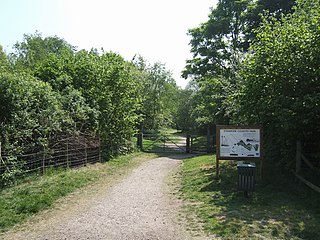
Royal Air Force Bridgnorth or more simply RAF Bridgnorth is a former Royal Air Force station, created after the outbreak of the Second World War on 6 November 1939, at Stanmore, to the east of Bridgnorth, Shropshire, England. However, as RAF Stanmore Park already existed in Middlesex, it was named RAF Bridgnorth. Although during its existence various static aeroplanes were displayed as gate guardians, RAF Bridgnorth never had a runway.

Air Chief Commandant Dame Ruth Mary Eldridge Welsh, was the second Director of the British Women's Auxiliary Air Force (WAAF), from 1943 to 1946.
Muriel Byck was an agent of the United Kingdom's clandestine Special Operations Executive (SOE) organization in France during World War II. She died of meningitis.

Lise Marie Jeanette de Baissac MBE CdeG, code names Odile and Marguerite, was a Mauritian agent in the United Kingdom's clandestine Special Operations Executive (SOE) organization in France during World War II. The purpose of SOE was to conduct espionage, sabotage, and reconnaissance in countries occupied by the Axis powers, especially Nazi Germany. SOE agents allied themselves with resistance groups and supplied them with weapons and equipment parachuted in from England.
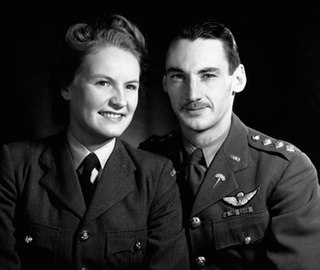
Sonya Esmée Florence Butt, also known as Sonia d'Artois, code named Blanche, was an agent of the clandestine Special Operations Executive during the Second World War. SOE agents allied themselves with groups resisting the occupation of their countries by Axis powers. The purpose of SOE was to conduct espionage, sabotage, and reconnaissance in occupied countries. The SOE supplied resistance groups with weapons and equipment parachuted in from England.

Yvonne Cormeau, born Beatrice Yvonne Biesterfeld, code name Annette, was an agent of the United Kingdom's clandestine organization, the Special Operations Executive (SOE), in World War II. She was the wireless operator for the Wheelwright network led by George Starr in southwestern France from August 1943 until the liberation of France from Nazi German occupation in September 1944. The purpose of SOE was to conduct espionage, sabotage, and reconnaissance in occupied Europe against the Axis powers. SOE agents allied themselves with French Resistance groups and supplied them with weapons and equipment parachuted in from England.
Mary Katherine Herbert, code named Claudine, was an agent of the United Kingdom's clandestine Special Operations Executive (SOE) organization during World War II in France. The purpose of SOE was to conduct espionage, sabotage, and reconnaissance in countries occupied by the Axis powers, especially Nazi Germany. SOE agents allied themselves with resistance groups and supplied them with weapons and equipment parachuted in from England.
Phyllis "Pippa" Latour MBE was a South African-born agent of the United Kingdom's clandestine Special Operations Executive (SOE) organisation in France during World War II. The purpose of SOE was to conduct espionage, sabotage and reconnaissance in occupied Europe against the Axis powers, especially Nazi Germany. SOE agents in France allied themselves with French Resistance groups and supplied them with weapons and equipment parachuted in from England. Latour worked as a wireless operator in Normandy from 1 May 1944 until August in the same year.
Air Commandant Dame Mary Henrietta Barnett was a senior officer of the Women's Royal Air Force (WRAF). From 1956 to 1960, she served as its director.
Royal Air Force Harrogate or RAF Harrogate, sometimes known as Ministry of Defence (MoD) Harrogate, was the name for two distinct Royal Air Force establishments within the town of Harrogate, North Yorkshire, England. The main site was at St George's in the south-west of the town and was home to a medical training establishment (MTE), supply branch and Women's Auxiliary Air Force (WAAF) training centre. The site was demolished in 1994. The term RAF Harrogate was also applied to the requisition of several hotels in Harrogate town centre which acted as a No. 7 Personnel Reception Centre during World War II. This should not be confused with RAF Menwith Hill, a current RAF base near Harrogate.
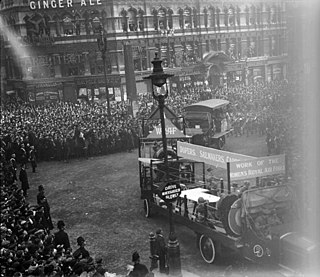
The Women's Royal Air Force (WRAF) was the women's branch of the Royal Air Force, existing from 1 April 1918 until 1 April 1920, when it was disbanded. Its original intent was to provide female mechanics in order to free up men for front line service in World War I. However, the organisation saw high enrolment, with women also serving in a number of other non-combatant roles, including drivers, caterers, clerks and tailors, as well as filling other wartime needs.
Royal Air Force Norton, was a non-flying RAF station on the southern edge of Sheffield in Yorkshire, England. The base had two distinct stages in its RAF career, being known as RAF Lightwood between 1939 and 1943, and later RAF Norton between 1943 and 1965. On opening it was part of Balloon Command designated to protect the city of Sheffield, and in its second iteration, the base was part of Signals Command and an aircrew refresher school was also based there.